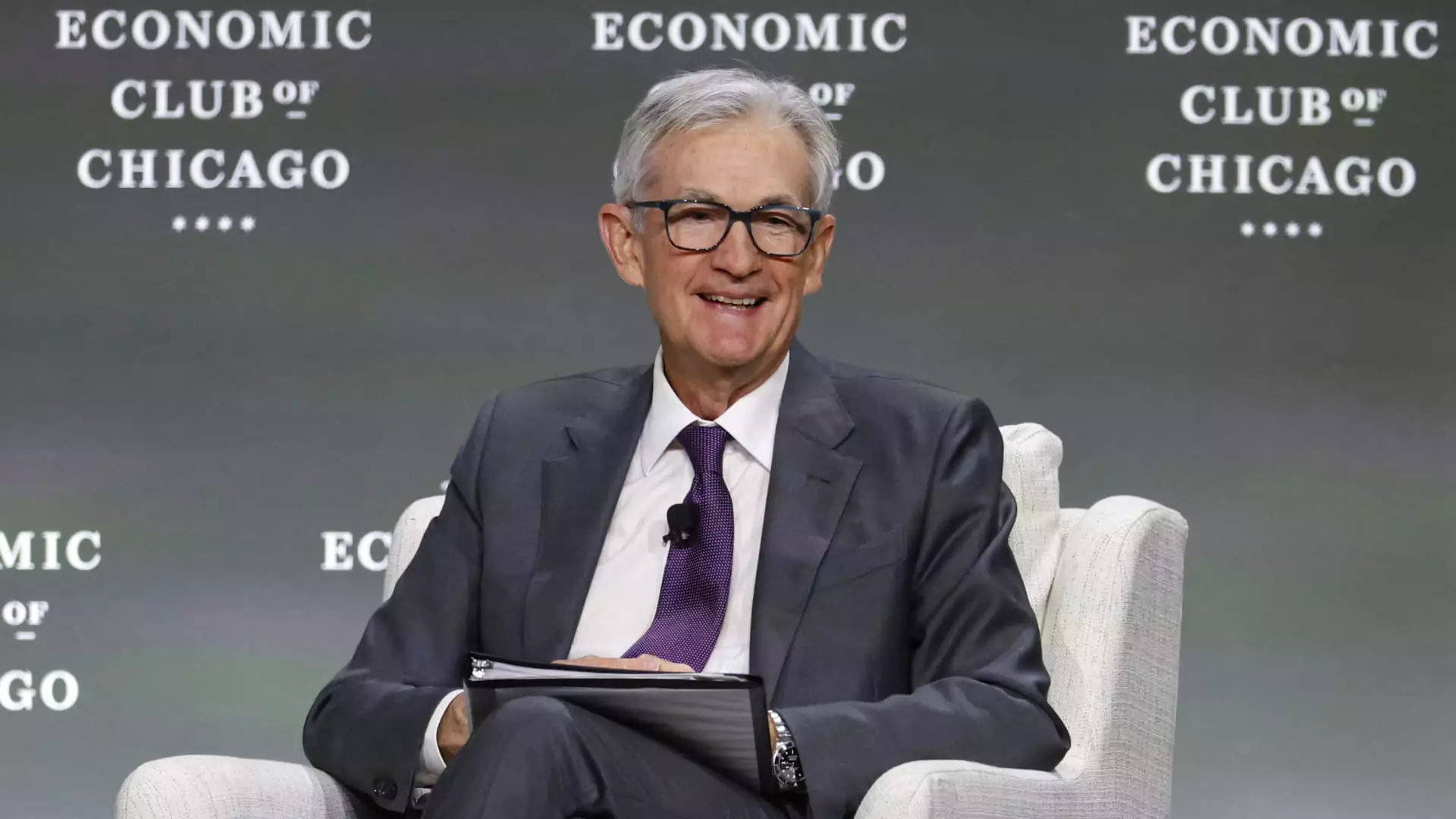As the Federal Reserve braces for an impending policy decision, it finds itself in an unenviable position: between the stark realities of a volatile economy and the pressures exerted by global trade dynamics. With the specter of President Donald Trump’s tariffs looming, the Fed is caught in a waiting game where inaction seems to be the only rational course of action. In this climate of uncertainty, Fed policymakers must navigate a landscape rife with mixed indicators—strengths that boost consumer confidence juxtaposed with weaknesses that signal underlying economic fragility.
Vincent Reinhart, a seasoned economist, emphasized the challenges ahead, pointing out that the Fed lacks a solid forecast for the forthcoming months. When economic signals are ambivalent, the instinct might be to act preemptively; however, in this scenario, patience emerges as the logical strategy for Fed Chair Jerome Powell and his colleagues. They must seek clarity on how official economic policy will truly affect inflation expectations before making any drastic moves—an indication that the Fed’s approach will be more reactive than proactive in the near term.
The Toll of Trade Wars on Economic Confidence
Adding another layer of complexity, the trade war initiated by the Trump administration has stirred considerable unease among consumers and business leaders alike. While there are tempting indicators of a strong job market—such as the addition of 177,000 jobs despite a contraction in GDP—the broader context reveals deeper concerns. Surveys from the manufacturing and services sectors reflect apprehension about inflation and supply chain disruptions, brought to fruition by the ongoing tariff battles.
Consumer optimism is dwindling, standing at multi-year lows—an alarming statistic that suggests the potential for a downturn in spending behavior. These sentiments are bound to weigh heavily on the Fed’s considerations as they mold their policies. The pressure to act, however, must be tempered with a clear understanding of local and global economic conditions. The Fed should tread carefully, avoiding decisions that are predicated on lagging indicators rather than robust data.
Impending Policy Decisions: The Case for Caution
At the upcoming meeting, market expectations suggest a slim chance of interest rate cuts; the Fed’s focus will largely be on gathering more definitive economic data. A sound strategy, though somewhat frustrating for those seeking clear-cut answers, lies within caution rather than haste. The futures market reflects this sentiment, with analysts pegging only a moderate probability of cuts at the June meeting.
Bolstered by commentary from economists such as Tony Rodriguez, optimism for swift and decisive action appears misplaced. With the Fed also refraining from updating its economic forecast until the June meeting, the prevailing wisdom is to exercise patience. “More data is crucial,” Rodriguez noted, and the economic landscape holds too many uncertainties to engender impulsive decisions. The dynamic interplay between economic performance and policy implications will dictate the rate-setting committee’s response in the months ahead.
The Political Landscape: Navigating External Pressures
Compounding these challenges is the added pressure from the White House. With Trump publicly advocating for rate cuts as inflation inches toward the Fed’s 2% target, policymakers find themselves in a politically charged atmosphere. It’s important, however, for the Fed to maintain its independence, free from the political whims directed by external pressures. Rather than succumbing to the call for cuts, the Fed’s leaders must remain unified in their mission to prioritize economic stability and integrity.
Reinhart highlights that, ironically, the tensions between the White House and the Fed might serve to fortify its internal cohesion. When faced with external criticism, private divisions tend to firm up—a potential silver lining in an otherwise tumultuous political atmosphere. As the Fed grapples with the ramifications of tariff-induced economic strain, the necessity for unity has never been more crucial. The stakes are high, and the need for undivided consensus must eclipse any dissonance that might weaken their response to prevailing economic challenges.
In this period of uncertainty, as the Fed readies itself for pivotal policy discussions, the need for careful deliberation is paramount. Future decisions should be informed by hard data rather than speculative expectations, allowing the Federal Reserve to respond thoughtfully to the ever-changing economic landscape. Only by embracing a balanced approach can they navigate the treacherous waters of financial policy amid a turbulent political backdrop.


Leave a Reply